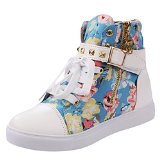African Disease
CAPE TOWN, South Africa – Ebola has grabbed all the headlines, but HIV still remains the world’s deadliest infectious disease – killing nearly the same number of people every day that the Ebola outbreak in West Africa has so far killed in 9 months.
“We are in the middle of an extraordinary crisis, ” said Tony Fauci, America’s top infectious disease doc and, officially, director of the National Institute of Allergy and Infectious Disease (NIAID).
The crisis Fauci was referring to here in a video presentation at the opening day of the HIV Research for Prevention conference featuring some 1, 300 researchers, health workers, activists and policy makers was, of course, the Ebola outbreak. What’s happening in West Africa is indeed a global health emergency that deserves our full attention and assistance, he said.
In the United States, Fauci noted, the crisis is mostly “an epidemic of fear and concern” that, among other things, has prompted a few elected officials to do unwise and potentially counter-productive things (like putting healthy people into quarantine). Doing damage control at home meant Fauci had to cancel his plans to speak in person at this meeting.
South Africa is also in the middle of an extraordinary crisis. It is the epicenter of the global HIV/AIDS pandemic, with the highest prevalence of HIV infection in the world. Nearly one out of every five South Africans is infected with HIV. The country has been successful at getting millions of people on anti-HIV drugs, but there is a sense of desperation nevertheless.
“The call for an AIDS-free generation is aspirational, ” said Helen Rees, one of South Africa’s leading medical researchers. “But we’re probably not going to get there any time soon.”
Rees’ sober assessment is based on a cold-eyed look at the still-expanding spread of HIV worldwide – more than 2 million new infections per year, according to UNAIDS.
Funding by the international community for fighting AIDS in poor countries has gone flat, or even declined, in recent years even as new infections outpace the ability to get people on drug treatment. Out of some 26 million people who today need these life-saving drugs, only about 10 million are now getting them. Deaths from HIV overall are down thanks to major initiatives like Pepfar or the Global Fund, but still more than 1.5 million die from AIDS every year.

Some 30 years ago, when AIDS first emerged, the world reacted much like it is now doing for Ebola – with a sense of urgency and a good share of similarly hysterical and bad policy decisions to boot. But the AIDS pandemic, even before the Ebola crisis, has not gotten much attention lately despite its still terrible global toll. That was partly what prompted the launch of this meeting, aka HIVR4P.


|
Hypertension in High Risk African Americans: Current Concepts, Evidence-based Therapeutics and Future Considerations (Clinical Hypertension and Vascular Diseases) Book (Humana Press) |

|
African Black Soap 100% Pure Raw 5 lbs. Beauty (madina)
|

|
African Cichlids Pet of Kings Mobile Application (Webthority)
|

|
Adinkra Akan #1 - God African Sign Symbology - 45" Black Wall Vinyl Decal Decorative Home (Applicable Pun)
|

|
YJ Womens Canvas Lace-up Zipper Increat Confortable Sports Shoes(6 B(M) US, Blue-Flower) Shoes
|